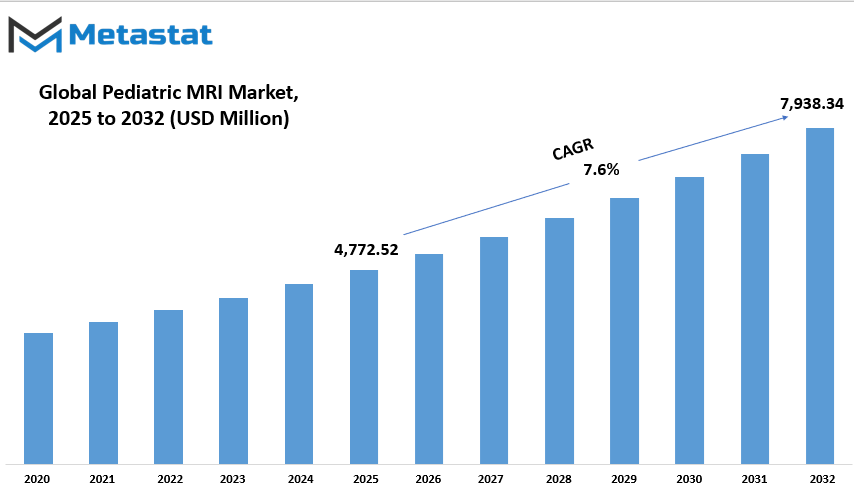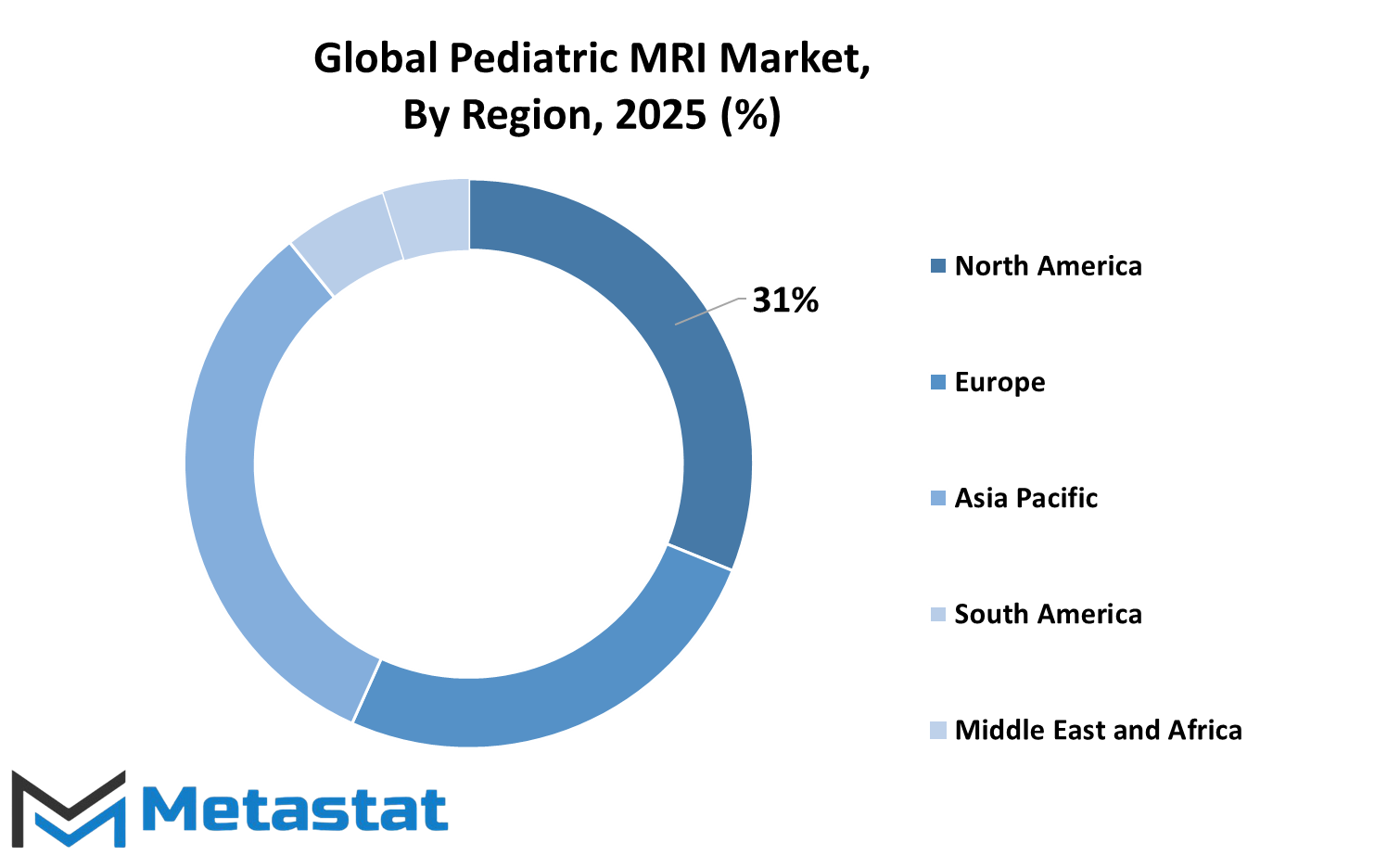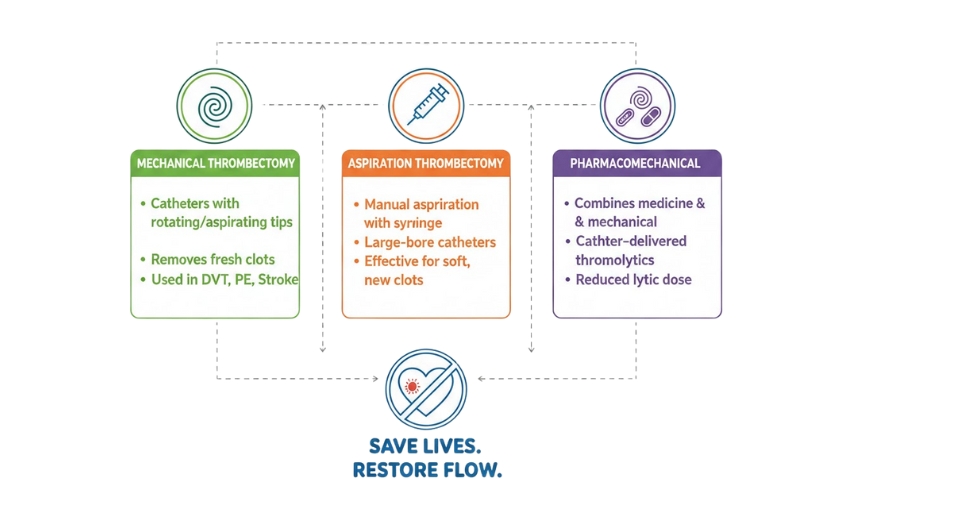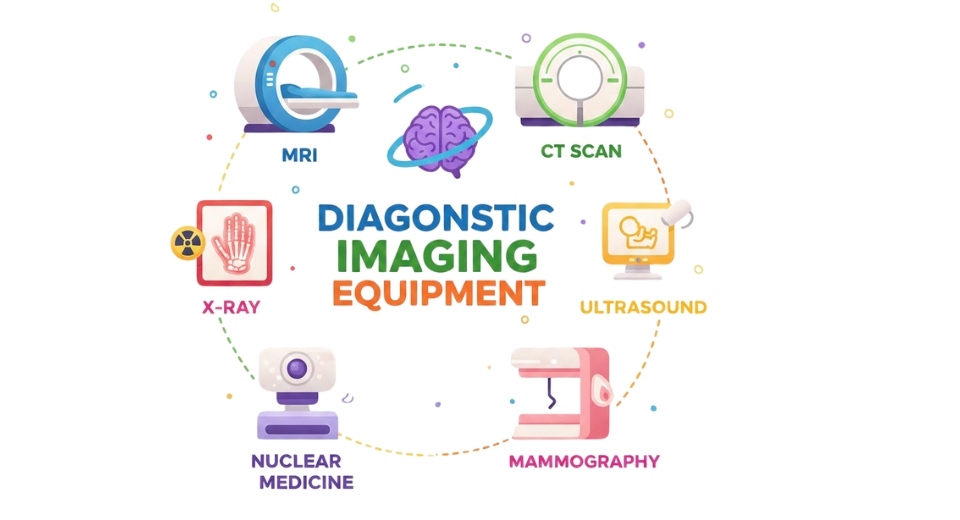MARKET OVERVIEW
The Global Pediatric MRI Market will revolutionize the medical sector, especially in pediatric diagnostics. Exponential growth in this market would depend on how medicine technology advances to offer specialties in catering to children's needs and improves the accuracy in diagnosis. Pediatric MRI is soon going to become an essential diagnostic tool in every hospital and clinic around the globe, offering a non-invasive solution for diagnosing a broad spectrum of conditions such as neurological disorders, musculoskeletal injuries, and congenital anomalies. The following years will be witnessing increased demand for these services with the increasing awareness of the need for early detection and the specific care needed by children.
Future imaging technology will make pediatric MRI systems more efficient and customized for young patients. The machines will be developed not only to be more powerful but also safer and less intimidating to children. MRI systems are bound to change as the designs will be tailored with child-friendly features, such as noise reduction and shorter scanning times. This will reduce anxiety and improve patient experience, making it easier for healthcare providers to conduct detailed scans without compromising the child's comfort.
The increasing interest in personalized medicine will also increase the boundaries of pediatric MRI applications. Advances in imaging technology will provide more accurate information about the anatomy of the child and his disease state. This will be used to give better-targeted treatments. The better understanding of the molecular basis of pediatric diseases will allow doctors to tailor MRI protocols for individual children, thus making diagnosis more precise and timely. Physicians can then administer the best treatments in a timely manner.
Integration of artificial intelligence and machine learning algorithms will be one of the other prominent trends in the Global Pediatric MRI market. The application of such technologies will aid radiologists to read pediatric MRI scans faster and with higher accuracy. AI-based systems will detect patterns that even the human eye might miss, giving a second layer of analysis for increased diagnostic certainty. These systems will ultimately allow healthcare providers to make faster decisions, leading to better results for pediatric patients. In the coming years, providers will be paying more attention to making pediatric MRI procedures cost-effective and accessible. As more and more hospitals and clinics introduce this technology, it is probable that the cost of pediatric MRI scans will not be as unaffordable for a greater percentage of patients.
In addition, predictive models which may further help explain how various conditions change over time will also be made possible by AI tools. Moreover, the advancement in mobile MRI units will allow children in rural or underserved areas to get timely and accurate diagnoses. These mobile units will be a convenient solution, providing access to pediatric MRI services in locations where traditional imaging centers might not be available.
The Global Pediatric MRI market will see continuous improvements in technology, safety, accessibility, and accuracy. Pediatric imaging will become more efficient and tailored to the needs of the younger patients, thus leading to better diagnoses and treatments. With this market growth, it is going to be an integral part of revolutionizing pediatric care in order to make sure that children all over the world receive the best medical care possible. The development of such advanced imaging techniques and AI will pave the pathway for a whole new era of pediatric diagnostics: detection and, therefore, cure with unprecedented accuracy and efficacy.
Global Pediatric MRI market is estimated to reach $7,938.34 Million by 2032; growing at a CAGR of 7.6% from 2025 to 2032.

GROWTH FACTORS
Several factors shape the future of the pediatric MRI market, and several are growing significantly worldwide. Increasing incidence of pediatric neurological disorders is one of the main factors that drives the growth. Diagnosis of diseases like epilepsy, brain tumors, and various other neurological diseases has increased rapidly in recent years, thereby requiring more advanced diagnostic tools like MRI. Early diagnosis of these conditions may help in better outcomes of the patient; thus, MRI technology is highly recommended for the detailed non-invasive diagnosis in children. Increased demand for such accurate and reliable diagnostics will spur the growth in the pediatric MRI market.
Besides, MRI technology especially designed for pediatric imaging has greatly increased the market growth. Advances in machine design as well as in imaging techniques have made MRI scans more accessible and safer to children. The pediatric-specific MRI machines are more comfortable, faster, and better in imaging quality, which is important for diagnosing children. Some of these technological developments not only improve the ability to diagnose accurately but also minimize the use of sedation or anesthesia during procedures, which is highly stressful for young patients. This technological advancement will most likely further fuel the market in the years to come.
However, the pediatric MRI market faces some barriers that may not allow it to grow to its full potential. The main barrier is the high cost of MRI equipment and procedures. It is expensive to purchase MRI machines and run the machines themselves. The high price can be a deterrent to both hospitals and clinics, particularly in developing regions where healthcare budgets are already low. More than that, pediatric imaging centers are scarce in some regions, hence limiting access of MRI technology for children.
While these pose challenges as noted above, growing demand for non-invasive diagnostic techniques in pediatrics remains attractive market opportunities. Parents and healthcare providers have become keen on finding alternative approaches to safer ones from invasive procedures, and MRI is a form of such non-invasive, effective diagnostic technique. With growing adoption of MRI technology in healthcare centers and increased investment in pediatric imaging centers in different regions, the market is likely to see a considerable rise. With rising demand for non-invasive diagnostics, the market is expected to continue growing further, thus creating growth opportunities for the pediatric MRI market in the near future.
MARKET SEGMENTATION
By Type
The Global Pediatric MRI market is gaining growth as new advancements in the field of medical imaging technology develop. MRI contributes greatly to diagnostics and follow-up investigations in children regarding a range of illnesses; therefore, demand for pediatric MRI services is ever on the increase. This market is segmented under several categories on account of diverse MRI techniques being applied.
Among the prominent types in this market is Functional MRI, valued at $1,254.29 million. A functional MRI is an advanced imaging technique that measures and monitors brain activity through detecting changes in blood flow. This technique is mainly used to analyze neurological conditions such as disorders in the brain, cognitive dysfunctions, and developmental problems in children. This kind of MRI enables doctors to understand the function of the brain better, allowing them to provide a better diagnosis and treatment. Pediatric healthcare providers will increasingly focus on personalized care, which means that Functional MRI for neurological diagnosis will probably increase in usage.
Another important pediatric MRI market segment is 4D MRI. This technique captures dynamic imaging so that the healthcare professional can image both the anatomy and the functionality of the body in real-time. It especially helps in complex biological structures and processes, particularly in conditions that relate to heart, lung, and other organ conditions. This ability to monitor real-time changes gives 4D MRI a huge value in diagnostics in pediatric medicine, where a doctor can have a closer eye on the working of the human body and discover abnormalities with high precision.
The "Other Types" segment also adds to the market's growth, comprising several specialized MRI techniques intended for particular medical applications. This could range from highly sophisticated imaging used in musculoskeletal, cancer, or other chronic conditions monitoring. These other types of MRI are fewer than Functional and 4D MRI, but they also add significantly to diagnosis and treatment in children.
The pediatric MRI market is developing steadily, and major breakthroughs in imaging technologies will continue to unlock new horizons for more precise diagnosis and effective treatment. Increased development of new, specialized MRI types will expand the market as new innovations open new avenues toward the better care of children affected by a multitude of health-related conditions.
By Product Type
The Global Pediatric MRI market is segmented based on product types, specifically into equipment and coil design. This division plays a crucial role in addressing the specific needs of pediatric patients, who often require specialized care in medical imaging. Each product type serves a different purpose in the broader context of pediatric MRI applications, contributing to the advancement of diagnostic capabilities for children.
The equipment category includes all the necessary machinery for MRI scans. These machines are designed with the latest technology to produce high-quality images of the inside of the body. In the pediatric market, MRI equipment is designed specifically to cater to the needs of younger patients, whose needs are different from those of adults. Pediatric MRI machines are often more compact, ensuring the comfort and safety of children during scans. They also incorporate features to limit the length of the procedure as well as limit the usage of sedation; this is highly important to younger patients as they will most likely be very restless to be held for too long a time.
The coil design product deals with coils found within MRI machines for the generation of radiofrequency signals. Such coils are highly needed to capture clearer images of inner body parts. In pediatric MRIs, coil design must consider the smaller size of children’s bodies, as well as the need for comfort during the imaging process. Pediatric-specific coils are engineered to ensure optimal image quality while being gentle and non-intrusive. They are made to fit children’s smaller anatomy, allowing for better results while reducing the chances of errors caused by poor coil placement.
Both the product types complement each other to ensure that pediatric MRIs are done more effectively and accurately. This is a testament to the growing demand for MRI technology specifically designed for children, who are increasingly aware of the importance of specialized care for younger patients. Pediatric MRI equipment and coil designs are integral to the overall landscape of medical imaging, as they ensure that children receive the best care possible during these diagnostic procedures.
With the continuous growth of the market, both categories are expected to have advances that improve the quality of care. In terms of technology, there will be even sharper imaging that can help to successfully diagnose various conditions, from neurological problems to musculoskeletal issues. More demand will arise for high-quality, specialized MRI equipment and coils from healthcare providers putting their pediatric patients first in keeping them safe and healthy.
By Application
It's observing a growth as more awareness arises regarding early detection and evolving scanning technologies. As pediatric MRI happens to be non-invasive detection, a high number of ailments in children have to be observed under the magnification of Pediatric MRI by their caregivers. There exist different applications as categories, by which health and disease issues may be more vividly determined by pediatric patients before proper medication takes place.
Among the most critical applications, neurological disorders comprise a large part of the pediatric MRI market. Neurological problems in children, like brain tumors, epilepsy, and developmental disorders, need clear images to understand their nature and administer the most appropriate treatment. MRI provides clear pictures of the brain and spinal cord, which is essential in establishing any anomalies or injuries in those areas.
Orthopedic conditions are another important application within the pediatric MRI market. Children are also susceptible to different types of musculoskeletal injuries, bone fractures, or congenital bone deformities. MRI is very helpful in showing very clear images of bones, joints, and soft tissues helping doctors to assess the injury or condition which will thus enable them to make proper planning for surgeries, therapies, and other interventions.
Another main driver for the pediatric MRI market is oncology, which refers to the study and treatment of cancers. Since pediatric cancers, such as leukemia and brain tumors, usually require constant monitoring and an early discovery of the symptoms for best possible treatment, MRI determines important information such as the size and location of the tumor as well as any possible metastasis.
Cardiac conditions, though less common, are another area where pediatric MRI is making a significant impact. Certain congenital heart defects or cardiovascular issues in children require imaging to ensure proper diagnosis and to monitor the heart's function and structure. MRI provides a detailed, non-invasive way to assess cardiac health in children, leading to more accurate treatment plans.
Apart from the aforementioned major categories, there are others that help in growing the pediatric MRI market, including infections, genetic diseases, and gastrointestinal problems. These "other" applications of MRI technology are increasingly being reaped as this technology offers the capability of detecting abnormalities that otherwise cannot be seen with more conventional imaging modalities.
The pediatric MRI market is growing because this modality is used to diagnose and manage various medical conditions in children. Since the technology continues to advance, MRI will continue to be the foundation of pediatric care, thereby detecting diseases at an early stage and improving outcomes in young patients.
By End-user
The global Pediatric MRI market is expanding and evolving, catering to a diverse range of end-users. Among the key segments of this market, the primary end-users include hospitals, diagnostic imaging centers, and pediatric clinics. Each of these segments plays a critical role in the overall demand and supply chain of pediatric MRI services.
Hospitals are one of the largest contributors to the pediatric MRI market. As advanced technology equipping healthcare institutions, they offer comprehensive medical services ranging from pediatric care. The demand for MRI scans has been increasingly high due to the rising numbers of pediatric patients with neurological disorders, congenital abnormalities, and other health issues that require such imaging. Hence, hospitals offer MRI services among their diagnostic facilities, especially as they have a specialized pediatric department. This demand will remain on the growth trajectory as hospitals improve their diagnostic techniques to diagnose accurate and early medical issues in children.
A pediatric MRI market is an important part, which is Diagnostic Imaging Centers, offering specialized images and is likely to be very accessible to most patients. They cater to children who need detailed imaging studies, especially when they do not require the broader range of services offered by hospitals. These centers focus primarily on providing high-quality MRI scans and often work closely with hospitals and pediatric clinics. Diagnostic imaging centers are going to play an even more dominant role in this growth, and the reason would be that people are still going to outpatients in numbers.
Pediatric clinics, despite being small-sized compared to a hospital, have a role of their own within the market, as these clinic provide special children care and the patient might be further referred to hospital or diagnostic centers for MRI tests. The physicians in these clinics frequently realize that their patients require imaging that is well beyond the level of their equipment. With more families coming to specialized clinics to get their children treated, pediatrics will be the driving force behind the demand for MRI services. In fact, these clinics may even act as a pre-screening or recommendation source for the required MRI procedures, further increasing their influence in the market.
The increasing demand for precise tools in pediatric patients' diagnosis across hospitals, imaging diagnostic centers, and pediatric clinics compels the increasing demand in this market. Due to interdependent contributions of sectors, MRI will remain an absolute tool in treatment and diagnosis procedures for pediatric cases. With technological advancements and rising awareness of health issues in pediatrics, the pediatric MRI services market will continue to expand among these end-users.
|
Forecast Period |
2025-2032 |
|
Market Size in 2025 |
$4,772.52 million |
|
Market Size by 2032 |
$7,938.34 Million |
|
Growth Rate from 2024 to 2031 |
7.6% |
|
Base Year |
2024 |
|
Regions Covered |
North America, Europe, Asia-Pacific, South America, Middle East & Africa |
REGIONAL ANALYSIS
The global Pediatric MRI market can be segmented into a number of geographical regions, where each of these regions is defined by specific characteristic features and purchase patterns. There are several region-specific markets based on geography that comprise North America, Europe, Asia-Pacific, South America, and the Middle East & Africa, where different segments have diverse demands and various elements driving the implementation of Pediatric MRI technology.
Market in North America divides itself into the United States, Canada, and Mexico. In this region, most of the market shares are dominated by the U.S. This is because the healthcare standards are high, technology is highly advanced, and demand is increasing for non-invasive diagnostic techniques for children. Growing demands are there in Canada and Mexico also, but are quite smaller in scale than in the case of the U.S. Healthcare providers in these countries are more concentrated on the improvement of child care through advanced imaging techniques such as MRI.
Another huge market for Pediatric MRI is in Europe, and countries such as the United Kingdom, Germany, France, Italy, and others within the remaining European regions have their focus. Healthcare services within Europe are high in quality, provided both by the public and private sectors. Pediatric MRI is increasingly being adopted in countries like Germany and the UK, as early detection is crucial and scans can be done without sedation. Italy and France, with their well-developed healthcare systems, also show an increasing reliance on advanced imaging technologies for pediatric care.
Pediatric MRI is growing rapidly in Asia-Pacific. The region comprises the major markets like India, China, Japan, and South Korea, along with the rest of the countries in Asia-Pacific. The increasing healthcare infrastructure in these countries leads to the adoption of MRI technology. For instance, the populous nations of China and India have significantly increased their health expenditure, thereby resulting in a rise in the number of hospitals and clinics offering MRI scans to children. Japan and South Korea have spearheaded the way into new technologies, such as Pediatric MRI, because of a strong, well-developed medical research system and a high-caliber healthcare system.
The South American region includes countries in Brazil, Argentina, and several other regions with a South America market for pediatric MRI. Here, healthcare expenditures are relatively modest compared to North American and European geographies, however, the necessity for advanced pediatric imaging technology is expanding steadily in this region, also due to higher awareness of advantages of early-stage diagnosis and a non-invasive procedure.
For the Middle East & Africa market, it can be fragmented into regions. The regions for the Middle East & Africa are thus split into GCC countries, Egypt, South Africa, and the rest of Middle East & Africa. There is a massive investment in healthcare infrastructure in countries within the GCC region, including Saudi Arabia and the UAE; therefore, the need for Pediatric MRI has increased exponentially. Egypt and South Africa also portray a growing demand due to modernizing health care services and enhancing quality access to health care.
The Pediatric MRI market is diverse in geography as every region holds its own drivers of growth as well as opportunity. This gives the companies which aim to grow and improve the healthcare services on the global front, a perfect insight into the markets.

COMPETITIVE PLAYERS
Pediatric MRI is an increasingly growing healthcare industry sector because of advancement in medical imaging technology. MRI is used for the diagnosis and monitoring of different ailments in children. Pediatric MRI is significant as it allows for imaging without the use of potentially harmful radiation, making it a safer diagnostic procedure for young patients. The Pediatric MRI market will witness growth in the coming years as more hospitals and healthcare centers start adopting this technology.
Some key players in the Pediatric MRI industry are as follows: GE Healthcare, Siemens Healthineers, Philips Healthcare, Advanced Imaging Research (SREE Medical Systems), LMT Medical Systems GmbH, Canon Medical Systems Corporation, Hyperfine Inc., Neoscan Solutions GmbH, NORAS MRI Products GmbH, and Bruker Corporation. These companies are at the forefront of developing and supplying innovative MRI solutions tailored specifically to the needs of children. Their technologies help improve the accuracy of diagnoses and provide a more comfortable experience for pediatric patients during the scanning process.
GE Healthcare is one of the well-known players in the medical imaging field and offers a wide range of MRI solutions designed for pediatric use. Their focus on improving image quality and reducing scan times makes their equipment highly valuable in busy healthcare environments. Siemens Healthineers also plays a significant role in the Pediatric MRI market, providing state-of-the-art MRI systems that offer exceptional imaging capabilities. Their systems are designed with features that help reduce anxiety and improve comfort for young patients.
Philips Healthcare also has a sizeable contribution of MRI systems providing high-quality imaging with minimal stress for pediatric populations. Their innovations also emphasize efficiency in the workplace for clinicians when using the technologies. Companies such as Advanced Imaging Research (SREE Medical Systems), LMT Medical Systems GmbH, and Canon Medical Systems Corporation are also working on Pediatric MRI technology to ensure that hospitals and medical centers have reliable and innovative imaging solutions.
Other companies such as Hyperfine Inc, Neoscan Solutions GmbH, NORAS MRI Products GmbH and Bruker Corporation are increasingly entering the market, developing and promoting new MRI pediatric healthcare market-based products and introducing improved pediatric MRIs with user-friendly technologies more accessible at cheaper prices, bringing the technological revolution and emotions from both parties - the pediatric healthcare and child family - within control.
The future for the Pediatric MRI market is positive, with lots of innovation and expansion expected over the coming years. As the technology improves, it will only become easier to offer high-quality, non-invasive imaging to children, further helping in early detection and treatment of various health conditions.
Pediatric MRI Market Key Segments:
By Type
- Functional MRI
- 4D MRI
- Other Types
By Product Type
- Equipment
- Coil Design
By Application
- Neurological Disorders
- Orthopedic Conditions
- Oncology
- Cardiac Conditions
- Others
By End-user
- Hospitals
- Diagnostic Imaging Centers
- Pediatric Clinics
Key Global Pediatric MRI Industry Players
- GE Healthcare
- Siemens Healthineers
- Philips Healthcare
- Advanced Imaging Research (SREE Medical Systems)
- LMT Medical Systems GmbH
- Canon Medical Systems Corporation
- Hyperfine Inc.
- Neoscan Solutions GmbH
- NORAS MRI Products GmbH
- Bruker Corporation
WHAT REPORT PROVIDES
- Full in-depth analysis of the parent Industry
- Important changes in market and its dynamics
- Segmentation details of the market
- Former, on-going, and projected market analysis in terms of volume and value
- Assessment of niche industry developments
- Market share analysis
- Key strategies of major players
- Emerging segments and regional growth potential








 US: +1-(714)-364-8383
US: +1-(714)-364-8383






